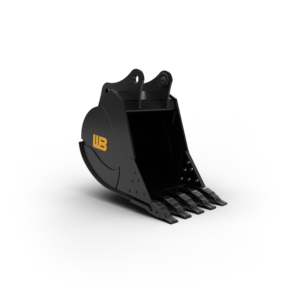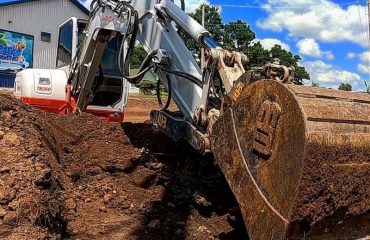In the dirt world, efficiency is vital! Unexpected excavator bucket issues can significantly disrupt your workflow and success of a project. Let’s dive into the top four excavator bucket issues that plague contractors and offer solutions and tips to get optimum performance and efficiency.

Wear and Tear
Excavation is a harsh environment for any attachment. Regular use leads to wear, especially on teeth and edges. Wear can be caused by a variety of factors from friction, impact with materials, exposure to abrasive substances and frequent use in harsh environments. Signs of wear can include thinning of bucket walls and belly, cracks, dents, loss of shape, and increased size of bore of the bucket pins. Wear typically appears first on high contact areas, like the lip, sides, and bottom. Excessive wear can lead to reduced efficiency, increase fuel consumption and even structural failure. This often leads to high-cost repairs or the need to replace the bucket early.
It’s critical to pick the right manufacture that builds a bucket using high quality components and uses abrasive resistant steel especially in high wear areas. It’s always best to get to know the manufacturer you are working with and make sure they are aligning the proper product to your application.
Replacing teeth and edges promptly as they wear and making routine checks to catch minor damage early enough can prevent early failure. It’s always good to inspect the bucket regularly for cracks, rust, decreased thickness and ensure all the teeth are still in good condition.
Invest in your operators and make sure they understand the machine’s and attachment’s limitations. The operator can significantly reduce the overall wear on a bucket by handling the bucket with care and avoiding unnecessary impact and damage.
Fit Up Issues
The only connection an excavator has to the ground is the bucket or attachment. Even a great machine will only be as good as the attachment that’s on it. All excavators have a unique hookup by design and manufacturers spend a lot of time and effort trying to gain efficiency and optimize operation. All of that can be negated with an incompatible bucket. Fit up issues can create an increase in operational risk. It’s important to ensure proper fit up from the start of use. Misaligned pins and couplers for example can lead to a loose fitment or a “wobbly bucket.” The more you operate a bucket that is misaligned, it will exacerbate wear and tear on both the bucket and the machine.
The solution starts and ends with picking a bucket and manufacturer that pays attention to the details. Firstly, it’s critically important to cross-check compatibility with your excavator model to ensure a secure attachment. Some manufacturers will bring over a more generic design that may have the same pin diameter however, the pin center to center dimension or dimension between the pins and the dimension between the hangers or ears will be incorrect.
When manufacturers do not follow the proper specification of the designed OEM specification, it not only affects initial fit up, but also affects the speed at which the bucket will wear out. It may even change the dump and curl angles that are specifically designed with intent by the machine manufacturer.
Another issue with fit up is incompatible attachment pin retention. This can prevent proper bucket attachment and be a hindrance when hooking up the bucket. It may even cause field modification to be able to retain the pins and keep them from freely spinning.
Also, proper pin selection is critical when attaching a bucket or attachment to a machine or coupler. Pins that are attached directly to the machine should be hardened while pins attached to a coupler would be a softer pin designed to take the wear from a hardened jaw from a coupler. Incorrect pin selection will cause premature wear and even failure of the pins itself.
Weight Management
Heavier buckets may pose operating challenges. Opt for a bucket that suits your excavator’s capacity to maximize efficiency without overextending machine limits. Most people are quick to go to the maximum size bucket or attachment that will fit on their machine.
A common thought is that a bigger bucket will yield better efficiency. However, it’s critical to look at every operation as its own production. Often, excavation companies are going to a bigger bucket only to find that we are not eliminating a pass to fill a haul truck or gaining any true productivity. If it is possible to eliminate a pass, it might make sense to go to a larger or higher capacity bucket. However, it may be better to go with a slightly smaller size to get to the lowest number of passes while maintaining better speed.
It typically takes running the math on the total process time to fill a truck or complete an operation. If you can match throughput and overall speed while utilizing a smaller bucket, it will yield great benefits in terms of fuel consumption and reduced wear and tear on the excavator itself. It’s critical to work closely with the dealer and manufacturer to wholistically approach your application and make an educated decision about what would serve your project best. Consider material choices on the bucket and how long it will last versus how much you may gain from efficiency and speed by keeping the bucket weight lower. It’s typical to get hung up on the upfront cost of a bucket or get sucked into buying a more expensive heavier duty bucket when your application may or may not actually need such additional protection.
The best approach we have found is to look at the project from a lifecycle cost perspective. Taking everything into account fuel consumption, speed and throughput of both options and balance upfront cost of the bucket versus the life of the bucket and what it produces. If production is fast and reduces enough fuel. it may make sense to get a bucket that won’t last quite as long. Conversely, if you are operating in a tough environment, you may be better off with the peace of mind knowing that bucket will not fail, and your operation will not go down even if you are giving up some speed due to weight in the process.
In terms of machine stability, it’s vital to think through how much weight the machine can handle. It’s important to analyze what material the bucket is digging in, what the weight per cubic foot is and how far extended the machine will be reaching. Also think through the operator and their experience.
Productivity Loss
Inefficient bucket design or the wrong bucket for the application reduces digging efficiency. Select a bucket suited to the specific material being handled—rocky terrain may require a more robust design than loose soil.
A well-designed bucket will enhance your ability to penetrate materials and dump more efficiently. It can aid in material not getting stuck in the bucket as well as maximizing the heaped capacity for each pass.
Inefficiencies in bucket design can cause issues with ground force penetration and the buckets’ ability to get through the material the excavator is digging in. It is important to pick a bucket built by a manufacturer that puts an emphasis on design and continued improvement.
Understand the application and select additional wear packaging to protect high wear areas for your application. That could include side cutters, vertical wear shrouds, heel shrouds, chokie blocks, internal liners, or a combination of these.
Identify your project’s focus before selecting a bucket. Smaller, precision buckets excel in landscaping, while larger buckets aid in bulk excavation. Regional soil conditions also dictate choice—heavy, clay-laden soils may warrant a different approach than sandy terrains.
Conclusion
Choosing the right excavator bucket involves understanding cost implications, comparing products, reading reviews, resolving common problems, and aligning your choice with your specific application needs. Evaluate these factors comprehensively to enhance machine performance and project efficacy. The right bucket build will strike a balance of strength and rigidity while minimizing weight as much as possible. This will achieve the best performance and fuel efficiency of the machine. Every detail matters from the design of the ears down to the tooth selection and how it all comes together in one cohesive package.







